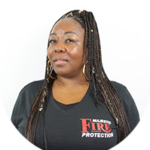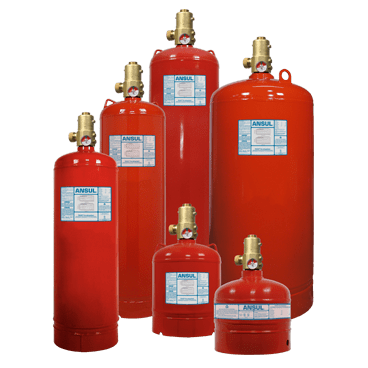Fire Suppression System Repair & Installation
Information on UL 300 and Select Fire Suppression Systems
Are you looking for fire suppression system repair or Installation? Our socioeconomic world is moving faster all the time and businesses everywhere are booming because of it! This speed may be good for business, but with more commotion in your kitchen, comes more opportunity for fire-related accidents. Now, more than ever, fire-safety is important and abiding by the UL 300 fire safety testing standards is not only a wise decision but could also save your business big time if ever an emergency event occurs. Whether you have an established restaurant operation or are in the planning stages, installing a UL 300 approved fire suppression system is one of the most proactive investments you can make for the long-term security of your business. This article will offer guidance for the inquiring consumer by comparing a few fire suppression systems on the market. First, it will highlight what UL 300 is and why it matters for your restaurant.

![]() Twenty-five years ago, Underwriters Laboratories (who now go strictly by UL) drafted an industry-standard outline called Fire Testing of Fire Extinguishing Systems for Protection of Restaurant Cooking Areas (UL 300 for short). This is as standard that highlights specifics that must be adhered to by the manufacturers of the equipment to qualify for the UL 300 stamp of approval.
Twenty-five years ago, Underwriters Laboratories (who now go strictly by UL) drafted an industry-standard outline called Fire Testing of Fire Extinguishing Systems for Protection of Restaurant Cooking Areas (UL 300 for short). This is as standard that highlights specifics that must be adhered to by the manufacturers of the equipment to qualify for the UL 300 stamp of approval.
To pass this rigorous inspection, the Fire Suppression System that a manufacturer submits for approval through UL must be submitted to UL for physical tests which include real world fire testing on the most up-to-date, popular commercial cooking equipment in restaurants far and wide across the United States. These approved fire suppression products are significantly more successful at controlling kitchen fires than the systems of the past designed only to pass previous standards. UL 300 is the mark to hit; so much so that the National Fire Protection Association (NFPA) requires within their standards that all systems in participating states must have this compliance. Even if your state codes do not have this mandate, it is still a wonderful idea to abide by the rule. The only states that are not currently involved in the NFPA standards are minimal: Arizona, Mississippi, and Missouri. All other states have enforcement codes that include UL 300 compliance dating back to as early as 2008.
Should your restaurant consider a UL 300 compliant fire suppression system? Do you need fire suppression system repair at your restaurant? If you’re new to the restaurant game you are almost sure to buy a fire suppression system that is UL 300 and the only reason you would not have one already compliant is if you never installed one because you did not need to or if you have not upgraded your equipment in twenty-five years. That said, know that when you comply with this standard you are insuring a minimal risk to human resources and physical assets. If you have not upgraded in a while, the fire hazards have evolved over the years and there are new threats to the kitchen where old ones used to be. As an example, deep fryers of the past had poorer insulation capability and a majority of commercial cooking used animal fat.

This created unpredictable temperature fluctuation whereas presently deep fryers are better insulated and vegetable oil has become common. Fire Suppression systems of the past used strictly dry chemicals to extinguish, but today because of the cooking evolution, systems need to be in a place that offers a cooling system. The lack of the cooling system is the number one reason for system failure of past suppression systems. After they would extinguish the flames, they would stay the same temperature and erupt again after the system had been triggered already!
It is time to compare a few new systems and systems that need fire suppression system repair, but so that you may better understand the process, we will highlight what the UL 300 systems should all have in common. Coupled with the use of a wet chemical agent, these UL 300 Fire Suppression Systems should all include a manual pull station, automatic fuel shut-off valves for electric and gas, maintenance on the hood and ducts and cleaning twice per year by an authorized licensed service company. The system must also have the wet chemical system serviced twice per year by an authorized license service company. Beyond that, they will include nozzles near the hood and the duct and located over every cooking appliance that generates grease.
Now, let us take a deeper look into these three different suppression systems. To discover them more in-depth, you can click the name of each system to be directed to each site. With perhaps the most vibrant logo of the three systems, the PIRANHA Restaurant Wet Agent Fire Suppression system is a fixed, automatic system that releases both wet and dry agents. It is engineered with a design that protects nearly every major appliance and the part that is a fire hazard. The system is totally usable in all commercial kitchens throughout every major sector where one might be found – including airports and nursing homes. The very important wet chemical regulated release is the ANSUL AUTOMAN. Besides supplying the parts to PIRANHA, ANSUL actually offers the R-102 Restaurant Fire Suppression System as a direct competitor and supplier to PIRANHA.
ANSUL claims its the number one provider of commercial fire prevention products. The sheer fact that PIRANHA incorporates competitor innovation into their product is a great sales point in favor of the quality one might receive from the R-102 Restaurant Fire Suppression System. A distinct offer from the R-102 that the PIRANHA cannot claim is that the R-102 is offered in two designs. One design is Appliance Specific, which means the system is arranged in a custom way for each appliance under its protection. The other model is an overlapping design where the nozzles are arranged to overlap each other, which provides a complete “fire-free” area within a group of appliances. The R-102 offers a low pH suppression agent and also a 5-year warranty.
There is another competitor currently offering a quality UL 300 fire suppression system that Majestic is experienced in providing fire suppression system repair. The Pyro-Chem Kitchen Knight II Restaurant Fire Suppression System. This product has a 3-year warranty and offers excellent service plans with great upfront information through presentations and user-friendly online experience. A side-by-side comparison shows too many similarities with any real differences being in the physical presentation and part aesthetics. ANSUL is a well-known name, but even though PIRANHA products use ANSUL products, that only really means PIRANHA is a quality option.
Any product your restaurant team chooses for its kitchen hood and duct fire suppression system is a step in the right direction, especially when you have Majestic to take care of fire suppression system repair. Talk with or sales representatives for more specific information and first-hand assistance. Buy a UL 300 compliant fire suppression system right away.
The Best Kitchen Fire Suppression System For Your Restaurant
Given the often razor-thin margins of restaurant operations, foregoing the cost and inconvenience of installing, maintaining, and/or updating a restaurant fire suppression system may appeal to many restaurant owners. This is especially true if and when the local restaurant fire safety code does not require that an existing kitchen suppression system is a compliant UL 300 fire suppression system. The chances of being one of the 0.8-1.1% of restaurants that actually experience an accidental or uncontrolled fire requiring intervention from the local fire department each year may feel slim. By comparison, the financial burden of installing and maintaining the best-fit and most effective kitchen hood fire suppression system may feel unjustifiably high.
Consequently, many restaurants do not currently have a well-maintained (fire suppression system repair outdated, regularly cleaned and tested) UL 300 compliant kitchen suppression system. Those restaurants that do install a UL 300 fire suppression system seldom do so voluntarily (due to inconsistent and slow adoption of UL 300 mandates at both a national- and state-level) Yet neglecting to install/update and maintain a UL 300 fire suppression system as an essential part of restaurant fire safety planning is a high-stakes gamble, with not only property damage, but also personnel and customer safety and operational abilities at risk.
Keep reading to find out more about why the risks of an insufficient, outdated, or under-maintained kitchen suppression system are not worth the wait — or contact Majestic Fire Protection today to get an estimate or schedule an appointment for installing, cleaning/testing, or upgrading your restaurant fire suppression system.
Why A Well-Maintained, Modern Restaurant Fire Suppression System Is Worth The Investment
Some statistics concerning restaurant fire safety seem to support the idea that having a fire-related emergency in a commercial kitchen would not cost much more than installing an appropriate kitchen hood fire suppression system. The average financial loss associated with restaurant fires is $22,540 – less than the average loss incurred by other types of food/eating establishments (like bars) and about twice the cost of a top-of-the-line kitchen hood fire suppression system. Yet this data is biased, as it includes the costs incurred by restaurants whose poorly-maintained or out-of-date kitchen suppression systems still semi-effectively contained the fire. Anecdotally, fires where an unclean kitchen suppression system quashes the visible fire in the kitchen often still require fire department intervention. Firefighters usually need to extinguish secondary fires or kindling-chains within the hood and vent system, as the primary fire ignites built-up grease and creosote in the vent. In such cases, restaurants tend to suffer about $5,000 in financial damages to the kitchen suppression system itself. In cases where no restaurant fire suppression system is present at the time of a kitchen fire, surveyed businesses have incurred up to $10 million in building and equipment damages. In addition to the dramatic increase in financial risk that comes with having an inadequate restaurant fire suppression system, restaurateurs choosing to put restaurant fire safety equipment on the back-burner also are at a significantly increased risk of damaging their reputation and relationship with the community.
Not only are restaurant fires more likely to cause customer injuries than fires in any other nonresidential building, but they also lead to prolonged closures for repair. Following an uncontrolled (newsworthy) kitchen fire, restaurants may be closed for repairs for years, with many failing to even publicize a timeline for reopening before the event fades from the local news cycle. As a result, as many as 70% of restaurants will either not reopen at all or fail within the first three years of operation following an uncontrolled fire event.
The Additional Cost Of A UL 300 Fire Suppression System is well justified though there are significant upfront costs associated with installing any commercial-grade kitchen hood fire suppression system. High cost does not always equal high quality; not every wet-agent kitchen suppression system is UL 300 certified. In commercial kitchen fires where the kitchen hood fire suppression system is out-of-date, the wet suppression agent in the system is often either unreleased (due to mechanical malfunction) or insufficient for the control of fires in modern high-efficiency cooking equipment. As a result, restaurants with out-of-date kitchen suppression systems incur greater-than-average damages, up to $1.75 million. This is because fires involving modern, high-efficiency cooking equipment can need as much as five times more fire suppression agent than older models, making fires started by or that spread to these pieces of equipment dramatically more difficult to extinguish (using an outdated kitchen suppression system) than fires involving similarly outdated equipment. Moreover, it is vastly more difficult to prevent flash and re-flash fires in high-efficiency cooking equipment, like deep fat fryers, as the involved oils ignite at lower temperatures. Installing (and maintaining) a UL 300 fire suppression system can reduce the risk of inadequate fire suppression response.
How A Restaurant Fire Suppression System Reduces Risk
It may at first seem unlikely that you will experience a fire-related emergency at your restaurant, especially if you generally follow fire code and have at least some degree of restaurant fire safety planning and training for kitchen employees. Nevertheless, uncontrolled and accidental fires in commercial kitchens and restaurants are remarkably common. Fire departments have responded to as many as 5,600-7,410 restaurant fires each year in the last decade, and experts note that the number of unreported commercial kitchen fires (like those effectively quashed by a functional kitchen suppression system) likely dwarfs the number reported.
The fact of the matter is: cooking causes nearly one-third of all nonresidential fires and cooking equipment, itself, is responsible for nearly two-thirds of restaurant fires and nearly 40% of fire-related property damage in restaurants. Restaurants with poorly maintained and out-of-date fire suppression systems take unnecessary risks in the event that a fire does occur in the kitchen, as both empirical and anecdotal evidence concerning restaurant fire safety unanimously support the conclusion that a well-maintained kitchen hood fire suppression system is essential to controlling and extinguishing uncontrolled and accidental kitchen fires.
Having even a functional kitchen suppression system in place will not prevent fires (nearly one-quarter are the result of improper equipment cleaning, with other common causes including grease ignition and unintentional/careless actions near the point of ignition). Yet, even in the absence of any additional sprinkler-based restaurant fire suppression system, restaurants with a functional kitchen suppression system incur fewer damages to property, personnel, financial stability, and community standing than those with inoperative, poorly-maintained, insufficient, or missing suppression systems. Experts further note that unreported fires most likely most often occur where restaurants with a well-maintained UL 300 fire suppression system can immediately and efficiently extinguish even high-efficiency fires, as a modern kitchen suppression system is designed to handle the stresses of modern commercial kitchen activity.
Upgraded Restaurant Fire Safety Equipment Is Not Enough
The best kitchen suppression system requires the best installation and maintenance. Working with a certified, knowledgeable restaurant fire suppression system provider is essential to achieving and preserving the insular effect of investing in a high-quality restaurant fire suppression system. As noted previously, when a kitchen suppression system is insufficiently cleaned, tested, and maintained, the risk of an uncontrolled and costly fire event increase significantly. Moreover, even the best quality kitchen hood fire suppression system cannot be effective if it is not installed correctly with respect to both ideal operating specs and proximity to the high-risk kitchen and cooking equipment (based on equipment layout, operational behaviors, and traffic).
Consequently, working with a highly knowledgeable and experienced restaurant fire suppression system provider, like Majestic, most significantly minimizes the risk of uncontrolled fire events and their associated costs and consequences. Additionally, Majestic Fire Protection certified kitchen suppression system technicians remain available for the testing and overall maintenance of any restaurant fire suppression system we install, helping to continuously mitigate one of the greatest risks to your restaurant business’s success. Contact Majestic today to get an estimate or schedule an appointment for installing, cleaning/testing, or upgrading your restaurant fire suppression system— in the event of an uncontrolled kitchen fire, you cannot afford to wait. If your in need of fire suppression system repair or installation, give us a call.
Sources
- https://www.usfa.fema.gov/data/statistics/reports/snapshot_restaurant.html
- https://www.nfpa.org/-/media/Files/News-and-Research/Fire-statistics-and-reports/Fact-sheets/EatingFactSheet.pdf
- https://www.fsrmagazine.com/expert-takes/4-reasons-upgrade-ul-300-standard-fire-suppression-system
- https://femalifesafety.org/pdf/Articles/2008%20March_UL%20300%20New%20National,%20State%20and%20Local%20Legislation.pdf
- https://www.usfa.fema.gov/downloads/pdf/statistics/v19i3.pdf
- https://www.nfpa.org/-/media/Files/News-and-Research/Fire-statistics-and-reports/Building-and-life-safety/oseating.pdf
- https://www.safety-managementuk.com/70-percent-fail.php
- https://femalifesafety.org/docs/ul300.pdf
- https://www.imca-int.com/alert/1164/fire-deep-fat-fryer/
- https://www.eater.com/2018/9/6/17820606/restaurant-fires-safety-causes-prevention
Links for Comparison
https://www.ansul.com/en/us/pages/ProductSeries.aspx? ProductType=Restaurant+Systems
https://www.captiveaire.com/catalog/showCatalogList.asp?cattypeid=87
https://amerex-fire.com/products/amerex-restaurant-systems/
http://www.pyrochem.com/html/prodkitchen.html
http://buckeyefire.com/products/restaurant-systems/restaurant-fire-supression-systems/
Information
http://blog.encorefireprotection.com/blog/guide-to-restaurant-fire-suppression-systems
https://www.cintas.com/fire-protection-services/articles/kitchen-systems-understanding-codes-and-compliance/
https://www.susquehannafire.com/fire-suppression/automatic-fire-suppression-systems/
Contact us
818 501-4989
16134 Valerio St.
Van Nuys, CA, 91406
info@majesticfire.com







